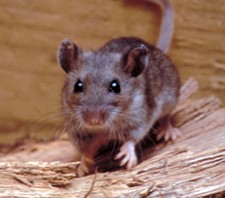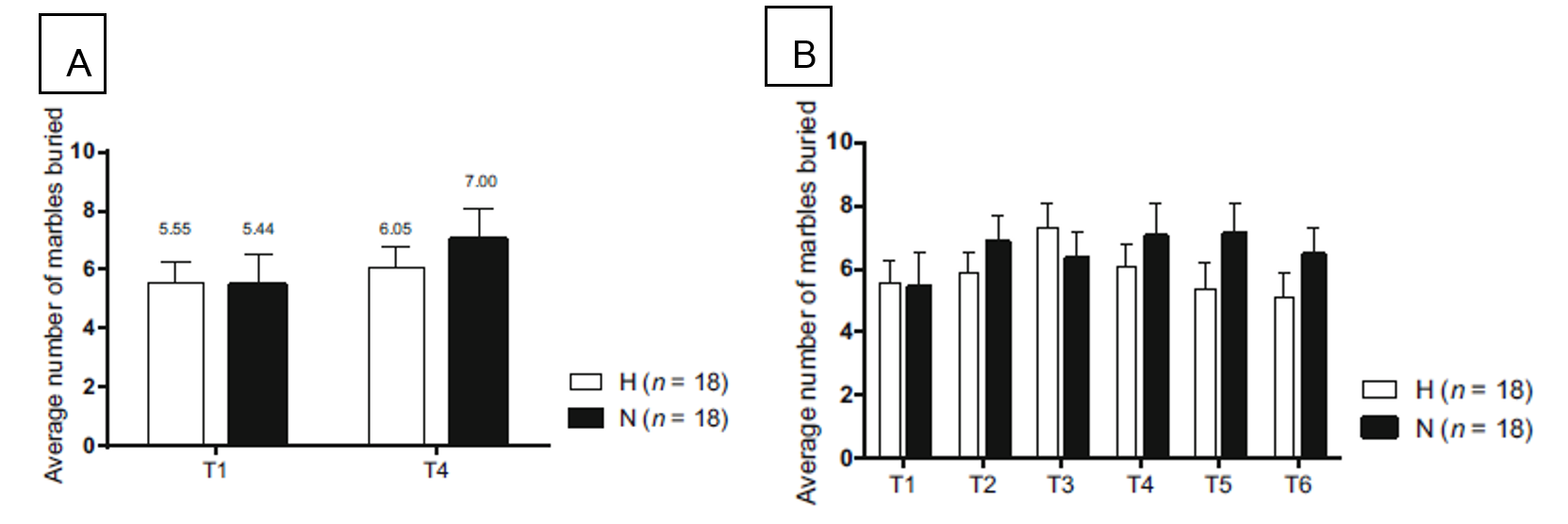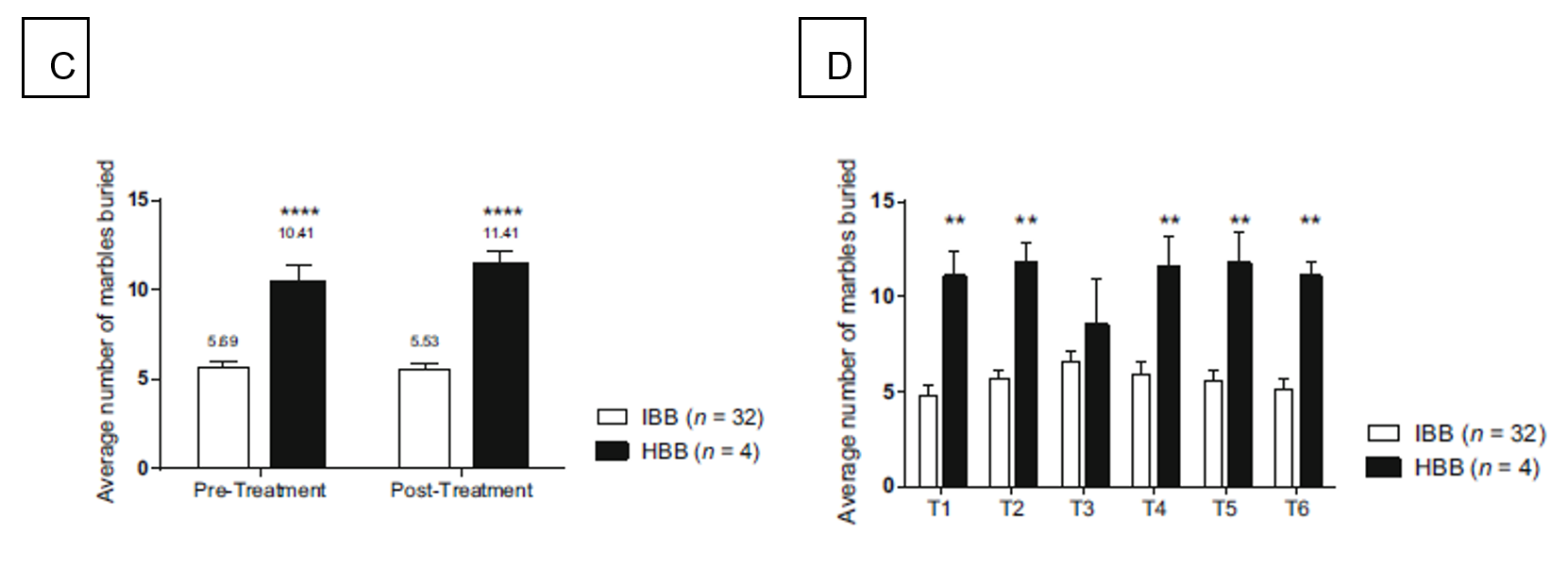Have you checked if your front door is locked? Is your stove turned off? Are you “saving” all those mailers, coupons, and magazines? How about folding those plastic sacks from the grocery store and tucking them away for another day? Have you scrubbed your counter-tops recently?
All of these behaviors are considered “normal” for most people. However, when these behaviors become so frequent and rigid that they disrupt everyday functioning, then these acts are no longer considered “normal” but obsessive-compulsive behaviors.
Studying obsessive-compulsive behavior in people is challenging – there are so many different ways for people to manifest the obsessive thinking and compulsive acting that hallmark the disorder itself. To study this disorder, researchers therefore often rely on animal models, such as mice. If we know what a compulsive mouse looks like, we can use them to evaluate different psychotropic drugs. Unfortunately, animal models greatly depend on valid measures that are analogous to the human behaviors of interest.
A recent article by Womarans, Stein, and Harvey in the February 2016 issue of Cognitive, Affective, and Behavioral Neuroscience called into question the use of marble burying behavior by deer mice as a valid measure of compulsive behavior or anxiety-like behavior.

Rodents, in general, like to bury things – themselves, their food, different objects . . . The burying behavior of deer mice has been studied as an accepted animal model of Obsessive-Compulsive Disorder (OCD).
Research performed by scientists at the North-West University in South Africa investigated several forms of burying behavior in deer mice as indicators of anxiety-like or compulsive behavior. Deer mice will bury any novel object, presumably due to anxiety caused by neophobia. This neophobic burying behavior should decrease as the animals habituate to, or become familiar with the novel object, or ingest pharmacological agents that reduce anxiety. These anxiolytics (drugs that reduce anxiety) also reduce two other forms of burying behavior exhibited by deer mice: defensive burying when faced with a threat (DBB, anxiety-like response) and inherent burying, a non-functional, repetitive behavior in the absence of anxiety (IBB, analogous to compulsive behavior).
Armed with this animal model of behavior, Womarans and colleagues identified deer mice that displayed high levels of stereotypical motor behavior (H, white bars in Figures A and B), such that they circled the testing cage repeatedly or jumped off the floor over and over, and another sample of deer mice that engaged in the lowest levels of stereotypy (N, black bars, in Figures A and B below). In previous studies, stereotypy had been used as a marker for OCD symptoms and the time the mice spent in stereotyped behaviors was indicative of behavioral severity. These two groups of deer mice were given several trials to investigate and manipulate 15 marbles placed about a test cage.
The deer mice were given 30 min to explore the cage and the marbles. The researchers counted the number of marbles the mice had buried (defined as 2/3 below the nesting material) after the mice were returned to their home cages.
The results of this baseline burying behavior were then compared to the burying behavior following four weeks of receiving a high dose of oral escitalopram, an antidepressant. In a nutshell, or maybe a marble in this case, there was no difference in inherent burying behavior for either group (Figures A and B, white and black bars).

The researchers concluded that despite high levels of stereotyped motor behavior, the marble burying behavior (Figure A) in the H group (white bars) as a whole did not deviate in form or frequency from the N group (black bars), suggesting that inherent burying (IBB) was not a sufficient measure of compulsive behavior as previously thought.
This conclusion was further validated by the lack of response to the oral antidepressant; the mice should have reduced their burying behavior significantly following the 4 weeks of administration, but this pattern did not occur for either group (Figures A and B). Finally, the mice did not show any habituation to the marbles, as both groups continued to bury a similar number of marbles across all 6 trials (Panel B in the figure above).
Taken together, these data argue that the previous assumption in the literature that marble burying behavior was analogous to compulsive behavior is mistaken and should not be used as a primary screening tool for compulsive-like or anxiety-like behavior in this translational model of OCD. Rather, marble burying behavior is more likely an inherent, investigative behavior that is exhibited similarly across the majority of deer mice.
One caveat to this conclusion, however, was that there may be different phenotypes in marble burying behavior as some mice buried marbles completely and at significantly higher rates than other individuals. Out of 36 mice tested, four, 2 from each group as luck would have it, were considered to have high burying behaviors (HBB, black bars, Figure C). When these four mice were tested against the other 32 mice, the HBB group buried more marbles than the mice showing IBB (white bars) on average (Figure C) or per trial (Figure D). The researchers concluded that this HBB group was an extreme variant that might be more representative of a compulsive behavior than mice that had extreme levels of stereotypy.

Obviously, a sample size of four is not sufficient to put all of our marbles into one bag, and additional research is needed to replicate these results. However, it is always a pleasure to see results that support a null hypothesis published instead of being buried in a drawer somewhere, such as where my marbles are currently stored!
Article focused on in this blog:
Stein, D. J., & Harvey, B. H. (2016). Of mice and marbles: Novel perspectives on burying behavior as a screening test for psychiatric illness. Cognitive, Affective, & Behavioral Neuroscience, 1-10. DOI: 10.3758/s13415-016-0413-8.
